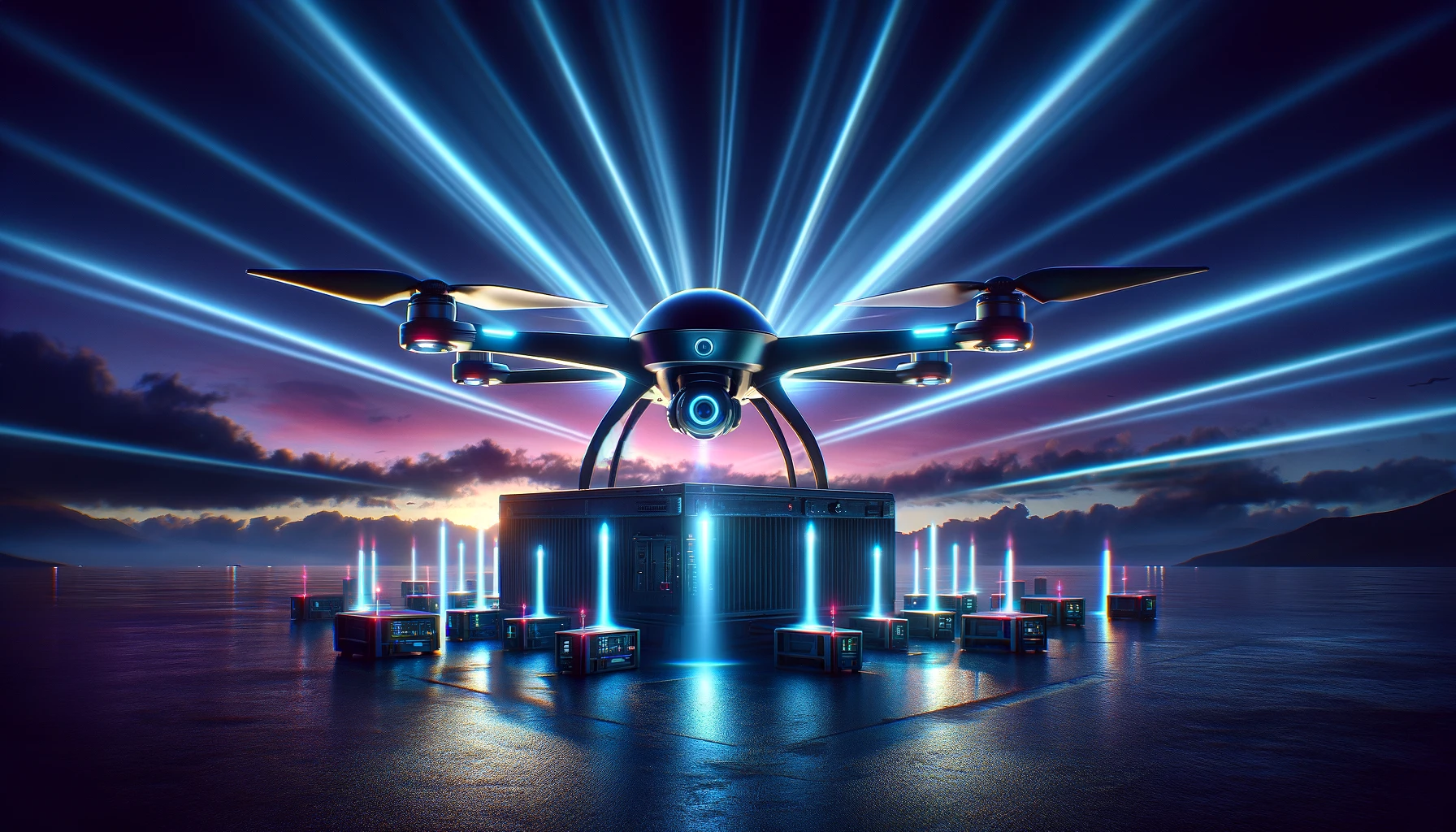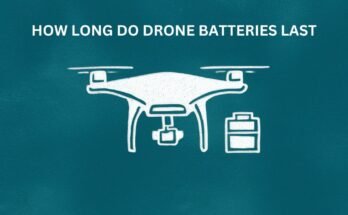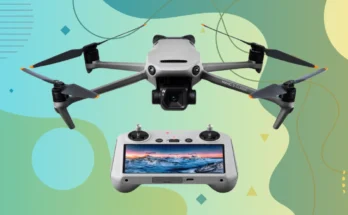In a technology where drones now not most effective promise innovation however also pose challenges in security and privacy, know-how the mechanisms in the back of their detection and law turns into crucial. Enter AeroScope, a modern-day technology designed to pick out and track unmanned aerial cars (UAVs) with precision. As concerns over unregulated drone flights amplify, AeroScope emerges as a pivotal tool in making sure airspace protection and responsibility.
This article delves into the workings of AeroScope, its function inside the evolving panorama of drone era, and its implications for each customers and regulators. With its particular competencies and the capacity to form future drone regulations, AeroScope stands at the vanguard of UAV control solutions. Join us as we discover the ability of AeroScope technology, a beacon within the quest for steady and responsible drone utilization.
Understanding AeroScope

AeroScope generation represents a large advancement within the subject of drone detection and control. At its core, AeroScope is a complicated machine designed to track and monitor drones in real-time. Unlike conventional radar systems that rely upon radio frequency alerts, AeroScope utilizes a combination of radio frequency (RF) and identity strategies to correctly discover and tune drones within its insurance region.
AeroScope operates through detecting the alerts emitted by means of drones, including Wi-Fi and radio frequency alerts. These alerts comprise specific identification facts, allowing AeroScope to differentiate between unique drones and offer precious facts to government or operators. By taking pictures and studying those alerts, AeroScope can determine important information about the drone, together with its make and version, serial range, and flight route.
One of the important thing capabilities of AeroScope is its potential to offer real-time information to authorities or operators, permitting rapid reaction to capability safety threats or unauthorized drone interest. This real-time monitoring capability complements situational awareness and allows for proactive control of airspace, ensuring the protection of each manned and unmanned plane.
Furthermore, AeroScope is designed to be scalable and adaptable, making it appropriate for deployment in various environments, from city areas to critical infrastructure web sites. Its modular layout allows for clean integration with existing airspace management structures, making it a versatile answer for drone detection and control.
Overall, AeroScope represents an enormous step forward inside the field of drone detection and management. Its capability to offer real-time tracking and identification of drones offers superior protection and protection for airspace management government, operators, and the general public. As we keep to explore the capacity of AeroScope generation, its position in shaping the destiny of drone regulation and security is becoming increasingly more apparent.
DJI AeroScope: Current Status
Overview of DJI AeroScope
DJI AeroScope stands proud as one of the principal solutions within the realm of drone detection and identification. Developed via DJI, the arena’s biggest drone producer, AeroScope is designed to mix seamlessly with DJI drones, imparting comprehensive tracking and control talents.
AeroScope operates thru intercepting signals transmitted with the aid of DJI drones in the course of flight. These signals consist of essential statistics along with the drone’s serial quantity, area, altitude, pace, and direction of journey. By shooting and studying those indicators, AeroScope can successfully become aware about and track DJI drones in real-time, enabling government to display drone pastime and respond to potential protection threats right away.
Clarification on the Discontinuation Rumors
Rumors regarding the discontinuation of DJI AeroScope have circulated inside the drone community, inflicting hypothesis and uncertainty approximately the future of the generation. However, it’s miles critical to deal with the ones rumors and offer readability on the modern-day reputation of DJI AeroScope.
Despite speculation, DJI AeroScope remains a vital issue of DJI’s surroundings, imparting vital abilities for drone detection and manipulate. While DJI can also moreover introduce updates or upgrades to AeroScope over the years, there is no indication of its discontinuation.
Furthermore, DJI has validated a willpower to improving AeroScope’s functionality and compatibility with evolving regulatory necessities. As drone generation maintains to develop, DJI AeroScope is poised to play a pivotal position in making sure steady and accountable drone operations.
In summary, DJI AeroScope stays a crucial tool for drone detection and manipulate, offering precious skills for authorities, operators, and the general public. While rumors might also circulate, it is critical to recognize AeroScope’s continued relevance and significance in the realm of drone safety and safety.
AeroScope’s Detection Capabilities
Can AeroScope Detect Other Drones?
One of the fundamental questions surrounding AeroScope era is its potential to locate drones beyond those synthetic through DJI. While AeroScope is generally designed to combine with DJI drones, its detection competencies make bigger beyond this precise emblem.
AeroScope operates on a frequency band that isn’t special to DJI drones, allowing it to come across and discover different drone fashions that emit comparable signals. This versatility enables AeroScope to offer complete drone detection abilities, regardless of the drone’s make or version.
However, it’s far essential to note that AeroScope’s effectiveness in detecting non-DJI drones might also vary depending on elements inclusive of signal electricity, sign interference, and the presence of other electronic devices within the vicinity. Despite those demanding situations, AeroScope’s capability to stumble on a wide range of drones makes it a treasured asset for airspace management and protection.
Differentiating Features of AeroScope
AeroScope offers numerous distinguishing features that set it aside from conventional drone detection structures:
- Real-time Tracking: AeroScope affords actual-time tracking of drones within its insurance location, permitting government to display drone hobby and reply directly to ability threats.
- Identification Capabilities: AeroScope can discover individual drones by means of capturing and reading their unique identity records, consisting of serial numbers and flight parameters.
- Integration with Existing Systems: AeroScope is designed to integrate seamlessly with existing airspace control structures, allowing interoperability and enhancing normal situational awareness.
- Scalability: AeroScope is scalable and adaptable, making it appropriate for deployment in diverse environments, from city areas to vital infrastructure websites.
Remote Identification (Remote ID) Functionality
Remote identification (Remote ID) is a vital aspect of AeroScope’s capability, allowing government to remotely identify and tune drones in real-time. Remote ID allows for the identification of drones and their operators, enhancing accountability and safety inside the airspace.
AeroScope’s Remote ID functionality enables authorities to get admission to critical records about drones, along with their make and model, operator data, and flight records. This records may be beneficial for law enforcement, emergency response, and airspace control purposes.
Overall, AeroScope detection abilties, mixed with its Remote ID functionality, make it a powerful device for enhancing protection and safety inside the airspace. As drone technology maintains to evolve, AeroScope stays at the forefront of drone detection and management, providing critical competencies for government, operators, and the general public.
Advanced Detection Techniques

Identifying Spy Drones with AeroScope
The proliferation of drones has raised concerns about privateness and security, in particular regarding the ability misuse of drones for espionage or surveillance functions. AeroScope’s superior detection strategies play a vital role in figuring out and mitigating the chance posed with the aid of spy drones.
AeroScope employs state-of-the-art algorithms and sign processing techniques to distinguish between legitimate drones and capability threats. By reading the particular characteristics of drone alerts, AeroScope can come across anomalies indicative of unauthorized or suspicious activity.
Furthermore, AeroScope’s integration with other protection systems, which include video surveillance and facial recognition technology, enhances its ability to pick out spy drones. By correlating drone sightings with different sensor statistics, AeroScope can offer government with actionable intelligence to cope with protection threats successfully.
Strategies for Detecting Unauthorized Drones
In addition to identifying spy drones, AeroScope offers diverse strategies for detecting unauthorized drone activity. These strategies include:
- Geofencing: AeroScope can define virtual boundaries, called geofences, to restrict drone operations in touchy or limited regions. By configuring geofences round important infrastructure sites, airports, and authorities centers, AeroScope can alert authorities to unauthorized drone incursions.
- Behavior Analysis: AeroScope can examine the flight conduct of drones to perceive suspicious patterns or deviations from ordinary operation. By monitoring elements which include altitude, velocity, and flight route, AeroScope can discover anomalies indicative of unauthorized or malicious activity.
- Threat Assessment: AeroScope can investigate the extent of danger posed by using unauthorized drone activity based on elements which include proximity to sensitive areas, flight altitude, and operator behavior. By prioritizing threats based totally on their severity, AeroScope enables authorities to allocate resources correctly and reply to capability security breaches.
Countermeasures Against Rogue Drone Incursions
In the occasion of an unauthorized drone incursion, AeroScope offers numerous countermeasures to mitigate the hazard. These countermeasures encompass:
- Jamming: AeroScope can disrupt communique among the rogue drone and its operator via emitting jamming indicators on applicable frequencies. Jamming successfully neutralizes the risk posed by means of the rogue drone, preventing it from carrying out malicious activities.
- Intercept and Neutralize: AeroScope can deploy interceptor drones prepared with net guns or other non-deadly incapacitation gadgets to neutralize rogue drones. By intercepting and disabling the rogue drone, AeroScope can take away the threat speedy and competently.
- Legal Enforcement: AeroScope provides government with the evidence needed to pursue criminal movement towards people or entities answerable for unauthorized drone interest. By documenting drone sightings and imparting targeted statistics approximately the drone and its operator, AeroScope strengthens the case for prison enforcement.
Overall, AeroScope’s superior detection techniques, coupled with its potential to install countermeasures, make it an impressive device for addressing unauthorized drone activity and improving protection within the airspace. As the risk panorama maintains to adapt, AeroScope remains at the leading edge of drone detection and control, providing critical abilities for shielding essential infrastructure and public safety.
Human Detection by Drones
Methods Utilized by Drones for Human Detection
With advancements in era, drones have won the functionality to detect and tune people with increasing accuracy. Various techniques are employed via drones for human detection, which includes:
- Visual Recognition: Drones geared up with high-resolution cameras and superior photo processing algorithms can come across and recognize human functions, including faces and frame shapes. Visual recognition enables drones to identify and song individuals in actual-time, even in crowded or complicated environments.
- Thermal Imaging: Thermal imaging sensors mounted on drones stumble on variations in temperature between people and their environment. This allows drones to discover humans based on their heat signatures, making thermal imaging specifically effective for night time-time or low-visibility operations.
- LiDAR (Light Detection and Ranging): LiDAR era emits laser pulses and measures the time it takes for the pulses to return, growing particular 3D maps of the environment. By analyzing those maps, drones can discover human presence primarily based at the precise reflections and movements of individuals.
- Radio Frequency (RF) Detection: Some drones are equipped with RF sensors able to detecting alerts emitted by means of electronic gadgets carried by using humans, which includes smartphones or wearables. RF detection enables drones to discover human beings primarily based on their electronic emissions, even if visual or thermal detection methods are not possible.
Privacy Concerns and Ethical Implications
While the capacity of drones to hit upon humans gives numerous blessings, along with seek and rescue operations, surveillance, and protection, it additionally increases big privateers issues and moral implications. Key concerns encompass:
- Invasion of Privacy: The big use of drones for human detection increases concerns about invasion of privacy, especially in public spaces in which individuals can also assume a reasonable level of anonymity.
- Data Security: Drones prepared with sensors and cameras acquire enormous quantities of records approximately people, together with their actions, behaviors, and sports. Ensuring the security and integrity of this data is essential to protect individuals’ privacy rights.
- Ethical Use of Technology: The moral use of drone generation for human detection involves balancing the blessings of improved safety and protection with the capability dangers to character privateers and civil liberties. Establishing clear suggestions and policies governing the usage of drones is vital to mitigate these dangers efficaciously.
Regulatory Framework for Human Detection Technology
To address privateers concerns and ethical issues related to human detection by way of drones, regulatory frameworks and recommendations were advanced with the aid of governments and industry groups. These frameworks goal to:
- Define the permissible uses of drone generation for human detection, taking into account elements consisting of privacy, records security, and ethical issues.
- Establish standards and high-quality practices for the collection, storage, and use of records gathered via drones for human detection functions.
- Ensure transparency and duty in the deployment of drone technology, including mechanisms for public oversight and accountability.
Overall, using drones for human detection gives huge benefits for numerous packages, however it also poses demanding situations and dangers that have to be carefully addressed. By adopting a balanced technique that considers privations, ethics, and regulatory compliance, the accountable deployment of drone era can decorate protection, safety, and public welfare.
Conclusion
In end, AeroScope generation represents a groundbreaking innovation within the subject of drone detection and management. From its capability to stumble on and become aware of drones in actual-time to its advanced functions consisting of far off identification and hazard mitigation, AeroScope gives helpful skills for reinforcing security and protection inside the airspace. As drones retain to proliferate and evolve, the need for sturdy detection and control solutions like AeroScope becomes more and more apparent.
However, the widespread adoption of AeroScope also increases crucial concerns regarding privateness, ethics, and regulatory compliance. Balancing the advantages of increased protection and safety with the safety of character rights and freedoms calls for careful attention and collaboration among stakeholders. By addressing those demanding situations thru obvious governance, moral use of generation, and adherence to regulatory frameworks, AeroScope can fulfill its capability as a device for reinforcing airspace control and public welfare.
Moving ahead, continued studies, development, and collaboration may be vital to release the overall potential of AeroScope era and make certain its responsible and effective deployment. By harnessing the abilities of AeroScope at the same time as upholding standards of privacy, ethics, and duty, we can create a safer and extra secure airspace for all.




